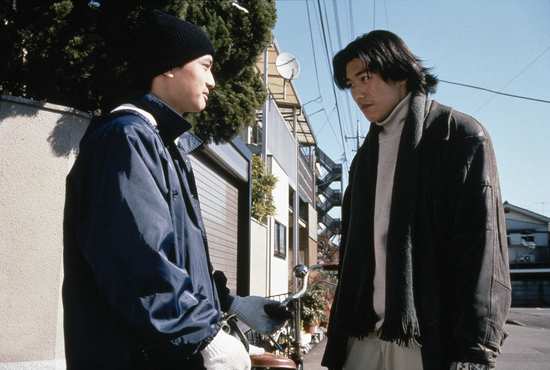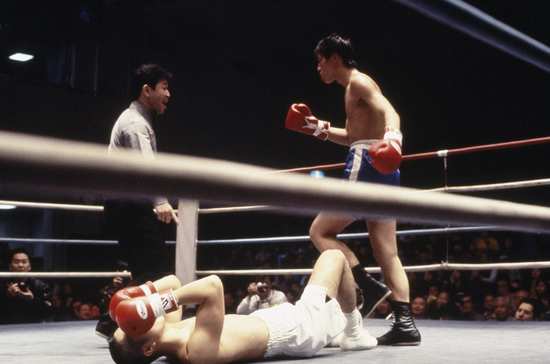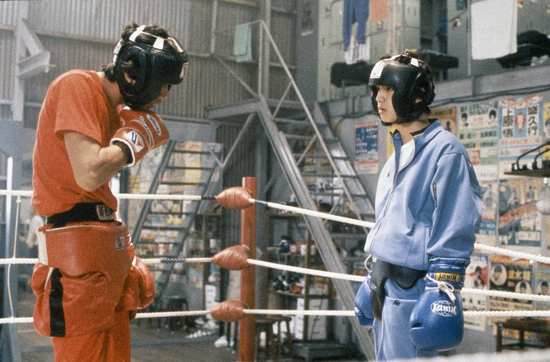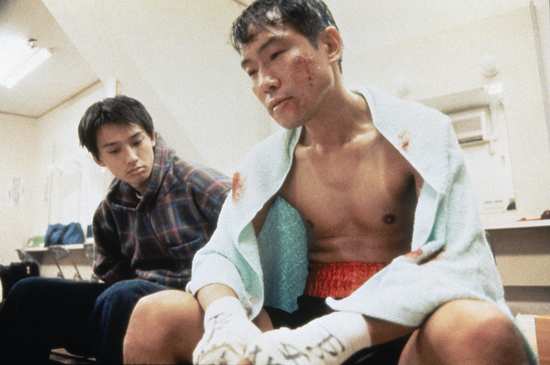Review for Kids Return
Introduction
With Kids Return, Third Window Films release the last of the Takeshi Kitano films that they had scheduled for 2016, although given the quality of the films that we have seen this year, I certainly hope that we’ll be seeing more Kitano films revisited in 2017 as well. It’s not just the movies themselves which exhibit consistent quality, but the films have had the full 2k restoration treatment for their Blu-ray releases, and they look and sound better than they have ever done before on home video. I have to admit that I wasn’t all that well versed with Takeshi Kitano’s back catalogue, assuming that it was mostly gangster movies and Battle Royale, but I certainly did perk up when Third Window started with Kikujiro, the one Kitano movie that I had seen, and had fallen in love with, assuming that it was the exception to the gangster rule. Then Third Window Films released Hana-bi, Dolls, and A Scene at the Sea, and I realised that Takeshi Kitano is a fantastic storyteller full stop. It’s certainly not just gangsters. However, yakuza do play a part in Kids Return...
Shinji and Masaru are delinquents. When they aren’t skipping school entirely, they’ll be skipping class, lounging on the school roof, or goofing around on Shinji’s bike in the schoolyard. They have no future, no prospects, and the teachers have given up on them. Masaru tends to bully other students out of their allowances, making them enough money to hang out at the local cafe or restaurants, watching the world go by.
It’s when a victim fights back that Masaru and Shinji both get the chance to make something out of their lives. Masaru realises that a loud mouth alone isn’t enough to make it, so he joins a local boxing gym, and drags Shinji along with him. It turns out that Masaru’s talents don’t lie with boxing, but his mouth has got him noticed by a local small time yakuza, and there’s room for him in that operation. It also turns out that Shinji does have the talent for boxing, and if he commits himself to serious training, he could be a successful fighter.
Picture
Kids Return gets a 1.85:1 widescreen 1080p transfer on this Blu-ray disc. If you’ve read my reviews for this year’s other Takeshi Kitano releases, you’ll be familiar with this spiel. Kids Return gets a sympathetic transfer on this Blu-ray; the film has cleaned up a treat, with no signs of print damage or age, but is properly filmic on this disc, with a nice layer of film grain, strong consistent colours, and excellent detail. One slight issue might be a comparative lack of dark detail, not quite as much in the way of black definition, but I would put this down to the source material, the film stock originally used. Otherwise Kids Return looks as great as all the other Kitano Blu-rays released this year.
The images in this review were kindly supplied by Third Window Films.
Sound
You get a DTS-HD MA 2.0 Stereo Japanese audio track with optional English subtitles. They are timed accurately and free of typographical error. One issue might be a lack of translation for background dialogue. I guess I’ve been watching too much in the way of anime, where the aim is to translate as much as possible, but in Kids Return the focus is always on the story, not on the background. Yet when one of the teachers’ lessons turned to the Coulomb force, I had an urge to know what he was talking about. The important thing here is that you don’t miss any of the story, and the dialogue is clear throughout. Joe Hisaishi provides the music for the film and it is mellow and evocative.
Extras
The disc quickly boots to an animated menu.
You’ll find a 21:12 Making Of, presented in 1080i 60Hz, and obviously upscaled from an SD source. It’s a narrated behind the scenes look at the film (so often you just get b-roll footage), and there are interviews with the cast as well.
There is also an audio commentary with Aaron Gerow, who has published a book on Takeshi Kitano. He takes us through the film, its production and offers some background. It’s an informative commentary, if a little dry and gappy.
Conclusion
One again a Takeshi Kitano film reminds me that it’s not necessarily the story, it’s how you tell it that matters. Kids Return for example tells the story of two delinquents, Masaru and Shinji that you’d be hard pressed to consider as heroes, let alone protagonists. At best they might be antagonists in any other film, but they’d more likely be the petty thugs that populate the background of a movie. They’re not exactly smart, certainly not successful, and they’re on a downward spiral to lifelong mediocrity. Yet in Kids Return they are indeed the protagonists, and their story is a compelling one.
Kitano doesn’t make it easy for me. I have an innate dislike of bullies, and Masaru is nothing if not a bully, using a pushy attitude and a loud mouth to extort money from students smaller in stature than him. But it very quickly becomes clear that actions have consequences here, when one of his victims calls on help, and Masaru learns that his mouth is no defence against fists. This is the pivotal moment in the film, which to this point has played out as a somewhat black comedy, following Shinji and Masaru’s unproductive lives at and around school.
Masaru decides to take up boxing to get even, and he drags Shinji along with him. But it’s Shinji that has the talent at boxing; all Masaru has is that mouth, although it’s enough to get him in with the local yakuza. The film drops in and out of their lives to see how they are progressing, Shinji becoming a better and better boxer, and Masaru working his way up the ranks, although Kids Return really focuses more on Shinji’s story at this point. After all, a yakuza is hardly a respectable profession, but Shinji has the opportunity to make something out of his life. It all depends on whether they can move away from those slacker attitudes that they lived with though school. Some things in life are harder to change than others.
Kids Return also offers little vignettes on other characters from the school. One regular at the cafe named Hiroshi has a thing for a waitress there named Sachiko, and we catch little snippets of his trying to woo her, to become the kind of guy that can impress her, getting a respectable job, a career. There’s a trio of lower ranked delinquents who show up occasionally, although the most successful of the students that we meet are a pair who have ambitions to become Manzai comedians, and bring their double act, honed in high school to the stage.
Kids Return is a deft blend of comedy and drama that is surprisingly entertaining and uplifting. I say surprisingly, as for me the core message of Kids Return is really quite bleak. No matter what you do, society is constructed in a way to grind you down, and if you don’t sabotage your own life down to your own pettiness and character flaws, there’s plenty of people out there to do it for you. Maybe it’s the final scene that leaves us on the right note of uplifting optimism. 2016 has been one big treat from Third Window Films when it comes to Takeshi Kitano movies, and they finish off in the same way that they started, with a class movie, presented impeccably in high definition.








Your Opinions and Comments
Be the first to post a comment!